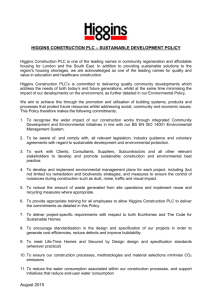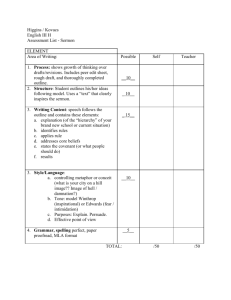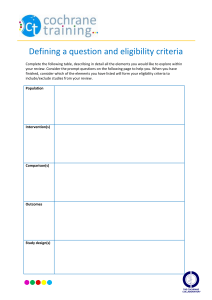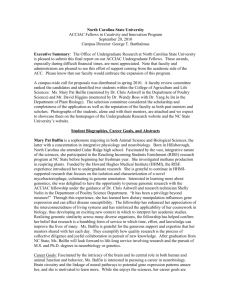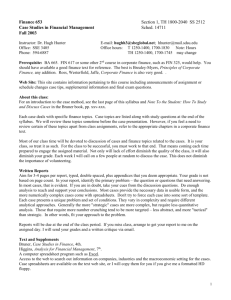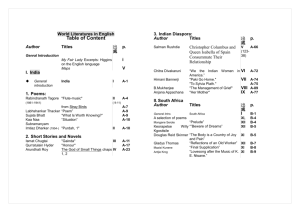Short version (current ideals or oughts)
advertisement
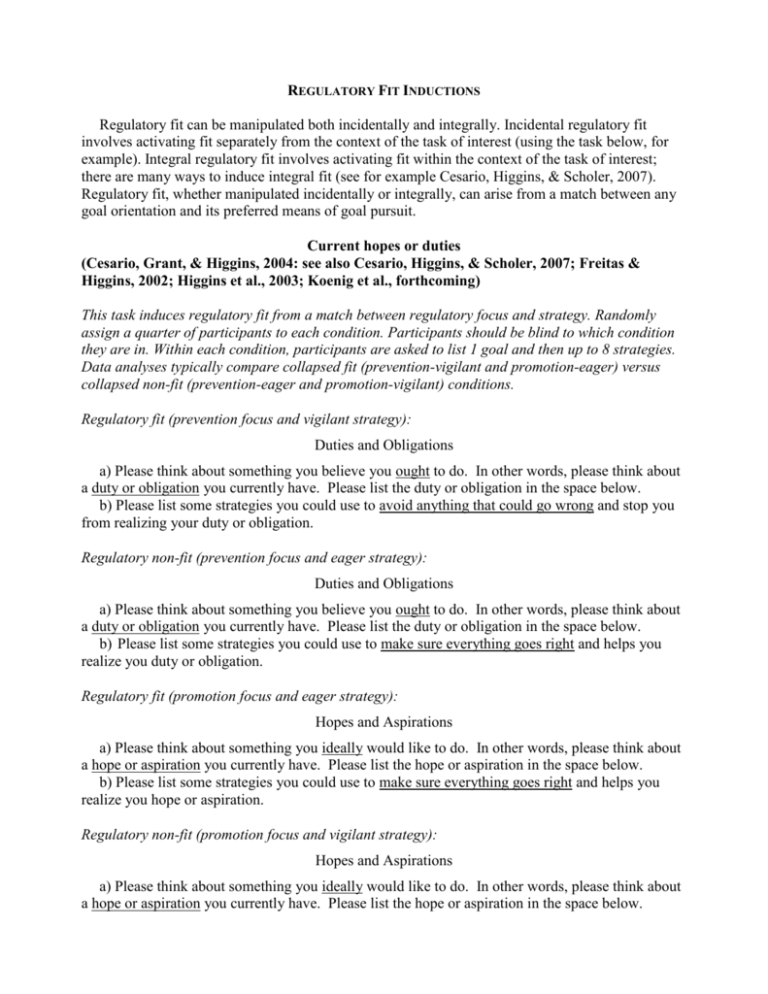
REGULATORY FIT INDUCTIONS Regulatory fit can be manipulated both incidentally and integrally. Incidental regulatory fit involves activating fit separately from the context of the task of interest (using the task below, for example). Integral regulatory fit involves activating fit within the context of the task of interest; there are many ways to induce integral fit (see for example Cesario, Higgins, & Scholer, 2007). Regulatory fit, whether manipulated incidentally or integrally, can arise from a match between any goal orientation and its preferred means of goal pursuit. Current hopes or duties (Cesario, Grant, & Higgins, 2004: see also Cesario, Higgins, & Scholer, 2007; Freitas & Higgins, 2002; Higgins et al., 2003; Koenig et al., forthcoming) This task induces regulatory fit from a match between regulatory focus and strategy. Randomly assign a quarter of participants to each condition. Participants should be blind to which condition they are in. Within each condition, participants are asked to list 1 goal and then up to 8 strategies. Data analyses typically compare collapsed fit (prevention-vigilant and promotion-eager) versus collapsed non-fit (prevention-eager and promotion-vigilant) conditions. Regulatory fit (prevention focus and vigilant strategy): Duties and Obligations a) Please think about something you believe you ought to do. In other words, please think about a duty or obligation you currently have. Please list the duty or obligation in the space below. b) Please list some strategies you could use to avoid anything that could go wrong and stop you from realizing your duty or obligation. Regulatory non-fit (prevention focus and eager strategy): Duties and Obligations a) Please think about something you believe you ought to do. In other words, please think about a duty or obligation you currently have. Please list the duty or obligation in the space below. b) Please list some strategies you could use to make sure everything goes right and helps you realize you duty or obligation. Regulatory fit (promotion focus and eager strategy): Hopes and Aspirations a) Please think about something you ideally would like to do. In other words, please think about a hope or aspiration you currently have. Please list the hope or aspiration in the space below. b) Please list some strategies you could use to make sure everything goes right and helps you realize you hope or aspiration. Regulatory non-fit (promotion focus and vigilant strategy): Hopes and Aspirations a) Please think about something you ideally would like to do. In other words, please think about a hope or aspiration you currently have. Please list the hope or aspiration in the space below. b) Please list some strategies you could use to avoid anything that could go wrong and stop you from realizing your hope or aspiration. References Cesario, J., Grant, H., & Higgins, E. T. (2004). Regulatory fit and persuasion: Transfer from “feeling right”. Journal of Personality and Social Psychology, 86, 388-404. Cesario, J., Higgins, E. T., & Scholer, A. A. (2007). Regulatory fit and persuasion: Basic principles and remaining questions. Social and Personality Psychology Compass, 2(1), 444-463. Freitas, A.L., & Higgins, E. T. (2002). Enjoying goal-directed action: The role of regulatory fit. Psychological Science, 13, 1-6.
